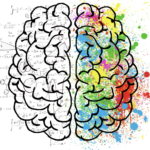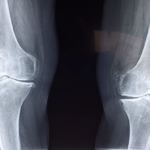Spotlight on Your Bones: Part I
Dr. Holly Castle Discusses A Whole-Person Approach to Osteoporosis
Bone health is one of the most important and often overlooked aspects of a person’s health. Your skeletal structure is literally the core of your existence. Therefore, you cannot survive without your bones. Your bones give you a skeletal structure and retain the minerals necessary for life.
In face, in the United States, nearly 50% of all women between the ages of 45 and 70 have some degree of osteoporosis. The disease is so common that we often view fragility, broken bones, back pain, and stooped posture as normal aspects of aging. However, osteoporosis is actually a condition that is greatly influenced by poor diet and lifestyle habits.
Generally speaking, if you are healthy, eating a nutritious diet, absorbing your minerals and nutrients, and keeping inflammation and stress low, you will likely preserve the health of your bones. However, if your health is poor, or your nutrient status is low, or you are struggling with illness, chronic stress or other inflammation, the body will tap minerals from your bones in order to maintain energy production and other metabolic activities and your bone health will suffer.
What Causes Low Bone Density?
Bone mineral density starts to decline before mid-life. Women experience bone loss, potentially, long before they hit menopause. Furthermore, osteoporosis is often linked to sarcopenia, an age-related process involving loss of muscle and strength. There are many illnesses that can cause secondary osteoporosis including adrenal gland insufficiency, ankylosing spondylitis, autoimmune disease, cancer, celiac disease, Crohn’s disease, diabetes, hyperthyroidism, multiple sclerosis, inflammatory bowel disease and others. In addition, there are a variety of medications associated with secondary osteoporosis. For example, glucocorticoids such as prednisone and cortisone, anti-seizure drugs, SSRIs for anxiety and depression, as well as proton pump inhibitors such as Prilosec and Nexium which impair calcium absorption and diminish levels of B vitamins.
Tests for Bone Health
The gold standard for defining bone loss and determining fracture risk is done through a DXA examination (dual-energy X-ray absorptiometry). In result, if your bone density is low then you are at greater risk of breaking a bone. The two scoring systems on a DXA report are T and Z scores. T scores are a measurement of your bone mineral density compared to that of a healthy young woman. The Z score compares your bone density to that of a person your same age and sex.
N-telopeptide (NTX) – This marker measures small molecules of bone collagen excreted in the urine. High levels of NTX are associated with rapid bone resorption and low bone mass in men and women. NTX can be helpful for monitoring if your treatments are helping to decrease your rate of bone loss. If your NTX levels go down, there is less bone loss and less risk for fracture.
C-telopeptide (CTX) – This is a similar marker to NTX but measures a different part of the collagen molecule. This can be tested in urine or blood. If your C-Telopeptide levels are high, your rate of bone loss may be high, and retesting this value 3 – 6 months after starting treatment can tell you if treatments are working, decreasing the rate of bone loss.
In addition, basic blood work including a CBC, CMP, vitamin D, urine calcium and Celiac profile are also helpful.
Nutritional Deficiencies Commonly Seen in Patients with Poor Bone Health
According to R. Keith McCormick, a chiropractic physician who specializes in nutritional management of patients with bone fragility, and the author of The Whole Body Approach to Osteoporosis, he suggests that there are many observable signs and symptoms linked to nutritional deficiencies also commonly seen in patients with poor bone health.
- Brittle fingernails – General nutrient deficiencies, malabsorption, or digestive issues, need for amino acids, biotin, calcium, zinc or other
- Flat nails with raised ridges – Anemia, iron deficiency, low protein intake
- White spots on nails – Low zinc
- Pitted nails – Low vitamin D
- Dry brittle hair – Low protein, biotin
- Bumpy skin on back of the arms – Low essential fatty acids, vitamin A
- Cracks at the edges of the mouth – Low B vitamin status, iron and zinc
- White coated tongue – Possible yeast infection
- Yellow coated tongue – Poor digestion
- Dental cavities, periodontal disease – Low vitamin D, vitamin C, bioflavonoids, riboflavin (B2), folic acid, calcium
- Muscle spasms – Low magnesium, potassium, calcium
- Muscle weakness – Low vitamin D and protein
- Abdominal bloating after meals – Need for digestive enzymes, abnormal gut microbiome, lactose intolerance
- Belching – Need for digestive enzymes and/or bile salts
- Constipation – Need for magnesium, fiber, probiotics
- Flatulence – Poor digestion, food allergy, gluten intolerance, digestive enzymes
Note: The signs and symptoms mentioned above are only potential indicators of deficiency or dysfunction. These signs and symptoms are not meant for diagnostic purposes but as a guide for further assessment and evaluation.




